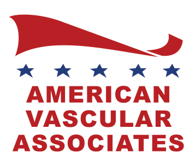How Baby Boomers May Lead to a Patient Boom: Age and Venous Disease Risk
As modern media spends an increasing amount of both time and focus on the Millenials and Gen Z, it may be easy to worry that not enough people are paying attention to the Baby Boomer generation. Thankfully, though, modern medicine is.
After all, in terms of venous diseases and treatment, Baby Boomers are not only the patients of the “near future,” but they’re the patients of today.
In other words, this generation now falls into the very age bracket that is most likely to experience such venous concerns, meaning they will quickly become the bulk of your patient roster if they aren’t already.
Risk Rises with Age
As physicians and medical professionals, we understand that you’re no stranger to the concept of how one’s medical risk factor rises with their age — especially as it concerns their venous health.
For example, a 2010 study conducted on the effect of aging on venous valves found that “aging is the strongest risk factor for venous thrombosis,” with incidences occurring most frequently in patients age 75 and older.
And as the venous system, in and of itself, will naturally weaken and deteriorate over time — even under the healthiest of lifestyles — deep vein thrombosis is only one of several possible venous complications that may arise down the road. Thus, you and your practice can expect to see a new wave of Baby Boomer patients in the coming years.
“Baby boomers—Americans born between 1946 and 1964—represent the largest generation of Americans,” the Journal of American College of Radiology (JACR) explains. “Every day, about 10,000 of them turn age 65 years, becoming Medicare eligible.”
What This Means for Baby Boomers and Your Practice
Simply put, Baby Boomers have officially entered the high-risk age group wherein they are most susceptible to venous diseases and complications.
In fact, research has revealed that the prevalence of peripheral arterial disease (PAD) is expected to land somewhere between 9.6 and 16 million for people age 65 and older.
And as Baby Boomers already account for approximately 20% of the population in the United States, that means you will need to be increasingly diligent when screening patients of that generation for possible symptoms.
“In 2020, the youngest Baby Boomers turned 55,” the Society for Vascular Surgery (SVS) points out. “Because many vascular diseases occur in the elderly, these 76 million Americans will create a demand for more vascular health services and will have access to far more treatments than their parents could have imagined.”
The Solution for When More Patients Means Less Time
As the number of Baby Boomer patients you see on any given day steadily rises over the next five to ten years — if not more — it will come as no surprise that you’ll find fewer opportunities to attend to administrative duties between appointments.
What’s more, you may find continued difficulties in pursuing other matters, such as revenue cycle management, branding, joint venture partnerships, and more.
But that’s where American Vascular Associates comes in.
Our organization is wholly committed to ensuring you can focus on what’s important: your patients. By offering a comprehensive suite of business management services and support, we exist solely to ensure your practice can adopt a synergistic model of outpatient care that is physician-driven and patient-focused.
You take care of the patients, and we’ll take care of the rest! If you have further questions or are ready to begin the process of joining the AVA network, simply contact our corporate office today by calling (877) 685-3281!



